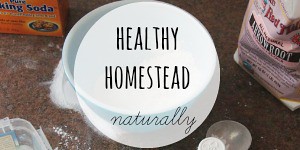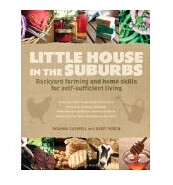Less Waste // What we're trying
>> Monday, August 27, 2018
House cleaning has been going in cycles. But the simple tricks are definitely helping. Still, it seems like no matter what we do, we get one area clean . . . move to the next . . . and then it just starts all over. Obviously this is what happens, but why is it so darned frustrating? I've turned my nesting to things that we need to check off the list before baby comes, like cleaning car seats and getting our van setup for three kids versus two. I also made a quadruple batch of naan bread for our freezer yesterday afternoon.
But today I wanted to share a quick post because some of you have requested it. For my birthday this year, I decided to get more serious about lowering our waste. I bought a few things that have actually helped quite a bit! And I get lots of questions about what they are, where I got them, and if they're working, so I figured I'd just give you the low-down here.

Silpat Mat
We do a lot of baking in our house, and -- as a result -- I go through a lot of parchment paper. I had used a Silpat Mat years ago but then ruined it doing so very high heat baking (bagels on 550+ degrees). One of my friends posted a picture of hers and I decided to give it another try. It's a silicone baking mat that you can use up to 480 degrees F. I use it every single day! So, as long as you don't bake really high temps (consider getting a pizza stone for that), I'd highly recommend this mat.
Cloth Bags
I have expanded our fleet of cloth zippered bags for snacks and lunches. So much better than using countless Zip-Lock bags that are used for five seconds for Cheerio's or pretzels and then tossed in the trash. They're cute, too. C'mon, you know they are. Mine are from Planet Wise and BumKins. I tend to get the sandwich size bags, but I may get some of the small snack baggies too.
I also see that Planet Wise now makes clear baggies, and I love that idea for more everyday things in my fridge.
Which leads to . . .
Silicone Bags
Then I needed reusable bags for all the refrigerated stuff -- leftover chickpeas, opened cheeses, stray avocados, etc. -- and I've always had such a hard time figuring out what to do. I did the whole beeswax wrap thing for a while and it worked OK. But I never totally got on board. Then I found these Silicone Bags . . . and they are MAGIC. They're the product I'm most enthusiastic about because they work really well and things don't spill. They're also very thick and you can use them for freezing, steaming, cooking, and even Sous Vide (which I don't have). But still, cool.
Also -- Amazon has many similar bags for sale, but the ones I got (and linked to) seem to have the best reviews. I have read it matters which ones you get. I have used mine daily for over a month and have absolutely no tearing or other issues.
Bowl Covers
Lots of baking, again, leads to lots of plastic wrap usage. I was using tea towels as well, but decided to up my game and get some proper bowl covers. I got two different types of sets. One that's breathable -- Earth Bunny 100% cotton -- and one that's more like wet bag material -- Wegreeco. Of the two, I actually use the Wegreeco (less expensive) more because it's air-tight in the fridge and helps create a nice moist rising environment for breads. But the fabric ones let air through and are good for popping over baked goods like muffins. Stephen also uses the largest one to put over his kombucha brew.
Each set came with a large, medium, and small. And they are all currently in use! I toss the Earth Bunny in with the wash and rise the Wegreeco out in the sink and let air-dry.
Lunch Box
Every year I cheap out on lunch boxes. And every year I am frustrated because I find myself packing the same old thing over and over again for lack of proper storage options. I decided to indulge in a YumBox Bento Box for Ada after seeing a snack-sized box in person at an L.L. Bean outlet this summer. I actually bought the snack box on the spot because it was so well made and really seems to be a tight seal. Ada's has five compartments and the specific design I got for her labels different food groups so that she can get involved with packing her own lunch.
She's really excited about this box, and I will report back on how it works from week to week. I read countless bento box reviews and this one consistently gets the highest ratings from parents. I may even want to get a second one, but they are $30, so I'll wait and see if just one will work for now.
Silicone Straws
The most awesome thing of all? The straws we're using now. I had used metal straws was liked them OK . . . and kind of cringed at the thought of glass straws. But I happened to find Silikids silicone straws at Target on clearance once day. Brilliant. They've been a total game-changer. They come in different sizes so they fit all our cups. I immediately went and bought another set on Amazon. I also got a few of their silicone cup toppers because all my Boon cup toppers have torn. These ones seem like they'll last a lot longer. I just rinse them out ASAP and let them dry standing up in our grass drying mat.
I'll be back soon with some thoughts on sending Eloise to "school" this fall and more nesting notes. It's getting crazy over here. In a good way. Read more...



























